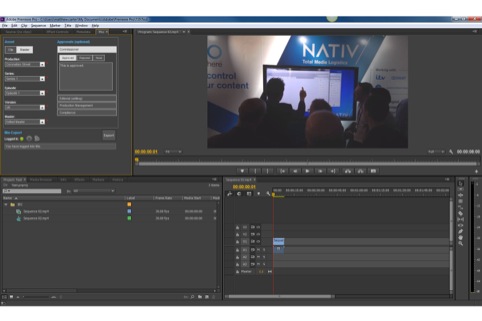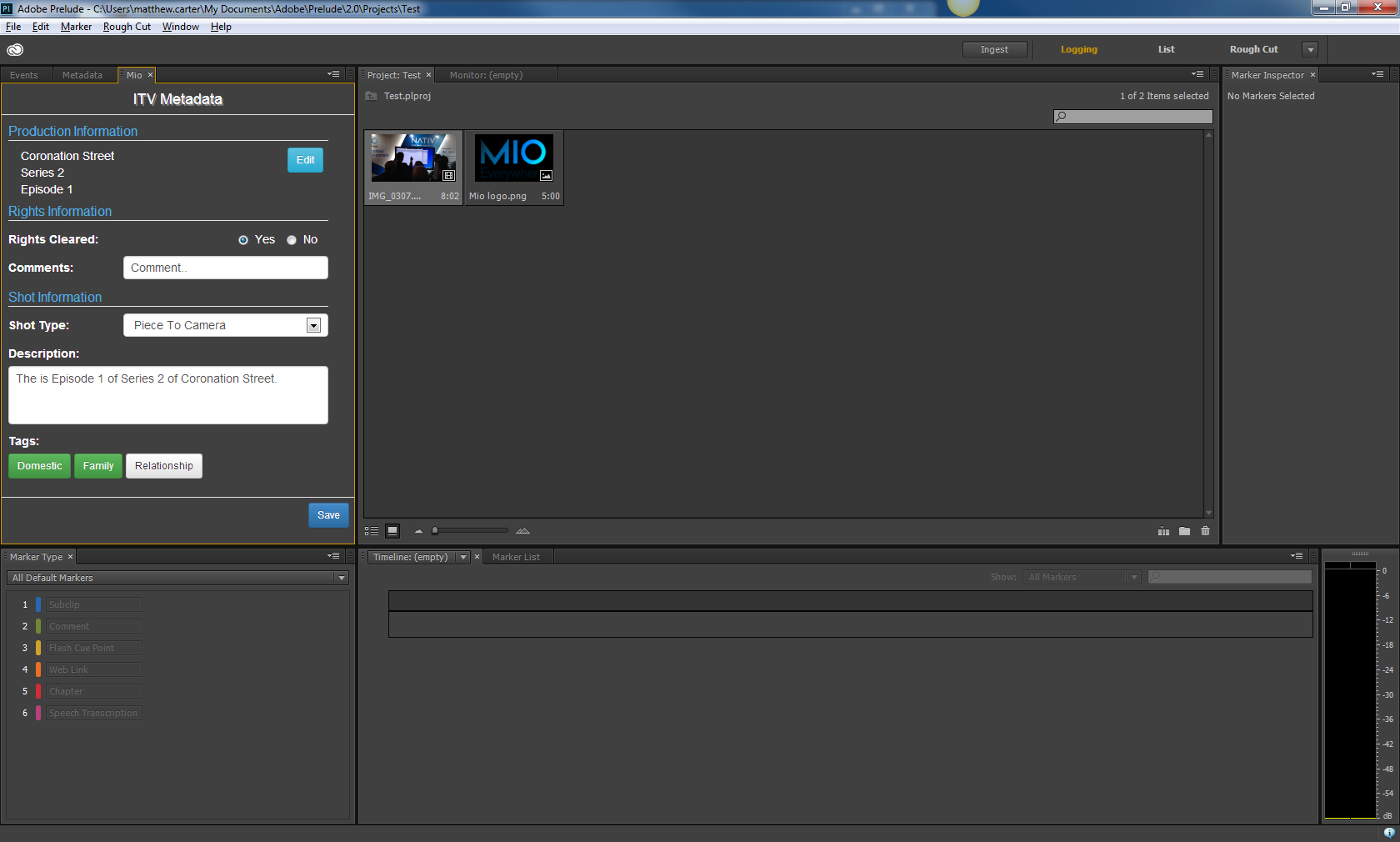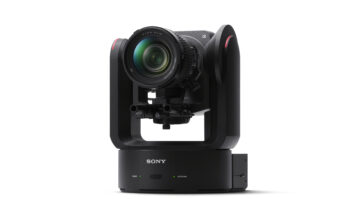
After a careful evaluation, ITV Studios selected Nativ’s Mio for its production transformation project. Adrian Pennington reports on the results.
ITV Studios is the largest and most successful commercial production company in the UK, creating over 3500 hours of original programming each year. Its world class portfolio includes Come Dine with Me, Dancing on Ice and I’m a Celebrity…Get Me Out of Here! It also produces the world’s longest running drama serial Coronation Street and hit international drama franchises including Agatha Christie’s Marple, Poirot and Vera.
Like many broadcasters and content producers the world over, ITV is under pressure to create quality content, more efficiently than ever. To help deliver on this the organisation has undertaken a major business transformation project encompassing content modernisation, short form creative, and smart production workflows.
With production key to ITV’s core business it was only logical to examine current practices and, where necessary, evolve the workflow and technologies to make the division even more creatively dynamic and responsive to market and audience demands. Identified as central to this goal was the simplification of production processes to maximise the benefits of file-based procedures, to eradicate errors and to hand more control to production teams by freeing them from repetitive and mundane tasks.
After careful evaluation of various vendor solutions, ITV Studio’s Production Innovation team selected Nativ Mio as the basis for a pilot of its production transformation project.
“We didn’t want to build a bespoke system in house,” explains Martyn Suker, head of production innovation, ITV Studios, and participant in last month’s TVBEurope workflow roundtable. “Instead we wanted a system that would work off-the-shelf but is also flexible so that we can configure it to handle our production data and workflows. We were looking for a company open to developing that alongside us. There was a willingness on the part of Nativ to work with us to expand the core functionality of their product, providing mutual benefit.”
Partners for change
Working alongside ITV’s production teams over a six month period beginning in Autumn 2013, Nativ’s development team gained a deep understanding of the organisation’s existing processes and how Mio could best be used to improve them.
“Only by putting new systems into a real, live environment can you quickly flush out any issues and learn whether your approach is right and what needs changing,” says Suker.
From day one the process embraced everyone involved from editing and logging staff, to production managers and producers, ensuring that Nativ understood fully how they worked and that the production team understood the benefits of the new technology. The approach was measured and sensitive to managing change throughout, including workshops and ample space for feedback. The focus was on capturing data at its point of generation and streamlining labour-intensive tasks without interfering in the creative process.
“One of our basic principles was that we needed a system to be very light touch,” explains Suker. “We didn’t want to build a big, centralised Media Asset Management (MAM) system.”
Most of the time ITV productions work independently, in the sense that the Come Dine With Me team does not need to share rushes with, for example, Saturday Night Take-Away, so there is no need for a conventional enterprise MAM system within a typical production environment.
“What we wanted was a comprehensive approach to tracking data and orchestrating the movement and tracking of media from one system to another in order to simplify production processes and to cut out time-consuming activities,” says Suker.
End-to-end data management
The importance of efficient data management is well understood at ITV.
“An awful lot of metadata throughout the production chain either gets lost or isn’t captured at all,” explains Suker. “One of the main cr
iteria we wanted to achieve was to fill in the missing links in data, truly and for the first time from end-to-end – from greenlighting of a commission, right through to delivery and even onto the consumer.”
Like many organisations, ITV’s production information is currently spread between disparate systems. This makes tracking data and video assets very difficult. Automating essential but mundane routines, such as re-keying basic information and stripping out the shipping tapes, hands more control and time to creative teams of producers, assistant producers and editors.
The promise of file-based workflows is efficiency on many fronts, yet the transition from tape throws up a number of complexities. One benefit is the ability to acquire significantly more rushes than before, yet this also can lead to a loss of control over large amounts of media. While it is straightforward to keep an eye on how much physical tape is being shot, it can be less intuitive for a producer to understand how many hours a 64GB card, for example, represents.
As material is input into the production system via Mio, producers are able to see at a glance how many hours it represents. That simple indicator is one practical example of how Mio at ITV is giving control back to producers so that they can better allocate and budget for storage, and plan what to keep and what to delete.
ITV also realised that valuable logging information was being lost or input erroneously, with expensive and wasteful consequences from incomplete data fields and time spent trying to reconcile media in one system with information in another.
“We need to know where content is, who generated it and when,” Suker continues. “In order to do that we had to have a technology platform that would not only enable us to structure and manage the data properly, consistently and visibly, but also that allows us to gain value from that data in other parts of the organisation.”
If ITV can quality control data at source and establish standardised, transparent and structured metadata from the outset, it will save errors which are always likely to creep in when information is manually rekeyed.
Reconciling media with metadata is core to Mio’s functionality and begins well before any media has even been created. Within the platform, producers are able to capture the editorial specification of a new commission (eg production name, channel, number of episodes, duration etc which forms part of the standard contract between a producer and broadcaster), in a process that allows media to be associated with that information as the production progresses. Mio understands the hierarchy of a production, series, episode and versions of an episode.
The ability to create these placeholders – or Business Objects – in Mio without having to first attach data to media is central to its operation at ITV. Once a production template is established, Mio automatically assigns appropriate data to the media. With a consistent and unified nomenclature ITV staff are able to search and access just the right version far quicker than previously. Mio is truly multi-tenanted: teammates, production partners and freelancers can be invited to participate without compromising security or control.
Integration with Adobe
For ITV, Nativ partnered with Adobe to integrate user-customisable Mio panels into Adobe Premiere Pro and Adobe Prelude. Adobe Prelude is a file-based ingest application that works in conjunction with Adobe’s editing application Premiere Pro. The integration allows producers and directors to easily add metadata to their video files directly from within the Adobe product set, but controlled by Mio. As a production’s camera cards are recycled, media is ingested and logged into Prelude with all technical metadata (bitrate, frame rate, aspect ratio and so on) automatically extracted, collected and catalogued into Mio seamlessly and behind the scenes. There is no risk of it going missing. At the same time user definable ‘tags’ can be added to individual or multiple shots.
In the craft edit users can open up a similar panel in Premiere Pro, select the exact project according to production, episode or version, edit the project, and export the completed programme when the session is finished matching it back to the production structure within the Mio platform in the background. This includes automated encoding and generation of proxies for review and approval – and automatic email notifications and requests to executive producers and other parties. When a version is ready to deliver for transmission, Mio’s workflow engine handles the Automated Quality Control and packaging as a DPP compliant file, before sending internally to ITV or onto other broadcasters.

Next steps
With the pilot programme complete, ITV is evaluating the results with the aim of scaling up the platform and rolling it out across ITV Studios productions.
“We’ve seen that our approach is right, that the metadata framework works in practice and more importantly that production really likes it,” says Suker. “Everybody we’ve shown it to can see the benefits and how it can make life simpler.
He continues: “In terms of data handling, Mio has proven to be flexible and configurable. Its workflow engine allowed us to automate a lot of things that were laborious and time-consuming. Being able to send out automated notifications and requests with a link to an online copy for comment, rather than manually creating a DVD, was a compelling result for us. That sort of innovation hugely simplifies the process and strips out non-value add tasks.”
Training on Mio is simple with a typical session lasting around one hour is all that’s required for new users to become familiar with the system and get to work with it. After evaluating feedback from all production staff, the ITV Production Innovation team intend to begin on-boarding more staff and migrate further productions over to Mio in the coming months as the broadcaster’s Production Transformation begins to yield genuine cost savings and creative benefits.







